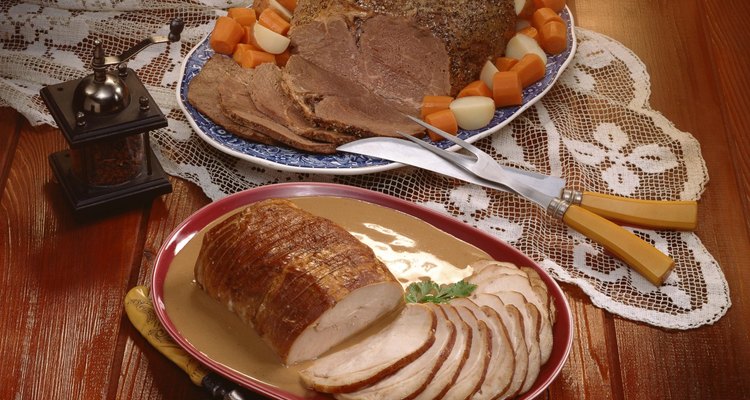
Cooking meat over higher temperatures tends to make the outside of the cut drier and overcooked while the middle is just up to a safe temperature. Slow cooking meat over a low temperature yields a tender, moist cut when done properly. The key to slow roasting your meat in the oven is time and temperature. Once you get those to things down pat you will be able to pull this technique off effortlessly.
Place your meat in a hot skillet on your stove top. Pan sear the entire outside of your meat
Preheat your oven to 200 degrees. Place your meat on the rack inside your roasting pan and place the roasting pan on the center oven rack as soon as the oven is done preheating.
Check the internal temperature on your meat regularly with a meat thermometer. Continue to cook it until the thickest center portion of your meat reads an internal temperature of 110 degrees. Depending on the size of your cut of meat, this should take between six and eight hours.
Raise the temperature on your oven to 500 degrees. Allow the meat to cook for an additional 10 to 15 minutes. Check the internal temperature again. Beef, lamb, duck and veal should be 145 degrees before you remove it from the oven. Pork should be 160 degrees and turkey, or chicken should be 165. If it has not reached that safe temperature, allow it to continue cooking, checking the temperature every five minutes until it is done.
Allow the meat to rest for 20 to 30 minutes before serving. This will enable the juices to settle into the meat so they don't run out when you carve it.
Related Articles
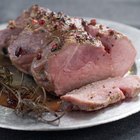
Length of Time to Cook a Beef ...

The Best Way to Prepare Bison Sirloin
How to Cook Boneless Top Chuck Steak in ...

How to Make quick Meat Loaf
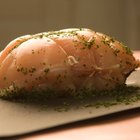
How to Braise Pork

How to Cook a Prime Rib That Melts in ...

Shank Ham Cooking Directions
How to Cook a Center Cut Sirloin of ...

How to Cook Beef in a Toaster Oven

How to Roast a Split Turkey
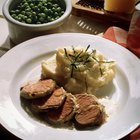
How to Cook Marinated Pork Loin From a ...

How to Slow Cook a Tri-Tip on the ...

How to Convection Roast a Brisket
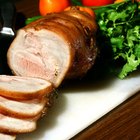
How to Store Leftover Roast Pork

Can You Bake Sliders?

How to Cook Deer Steaks in the Oven on ...

How to Tell If a Pork Roast is Done
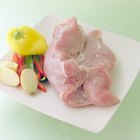
How to Cook Boneless Turkey Breast
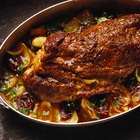
How to Use a Roaster for Pork
How to Bake Pork Loin Pieces
References
- O Chef: S-l-o-w Cooking Roast Beef
- "How to Cook Meat"; Christopher Schlesinger, John Willoughby; 2009
Writer Bio
Hillary Marshall has been writing professionally since 2006. Before writing instructional articles online, she worked as a copywriter and has been published in "Ideal Living" "Sass" "Science Edge" and "Shopping Cents" magazines along with countless websites including Gadling a blog by the Huffington post. Marshall studied early childhood education at the Stratford Career Institute.
Photo Credits
Jupiterimages/Comstock/Getty Images